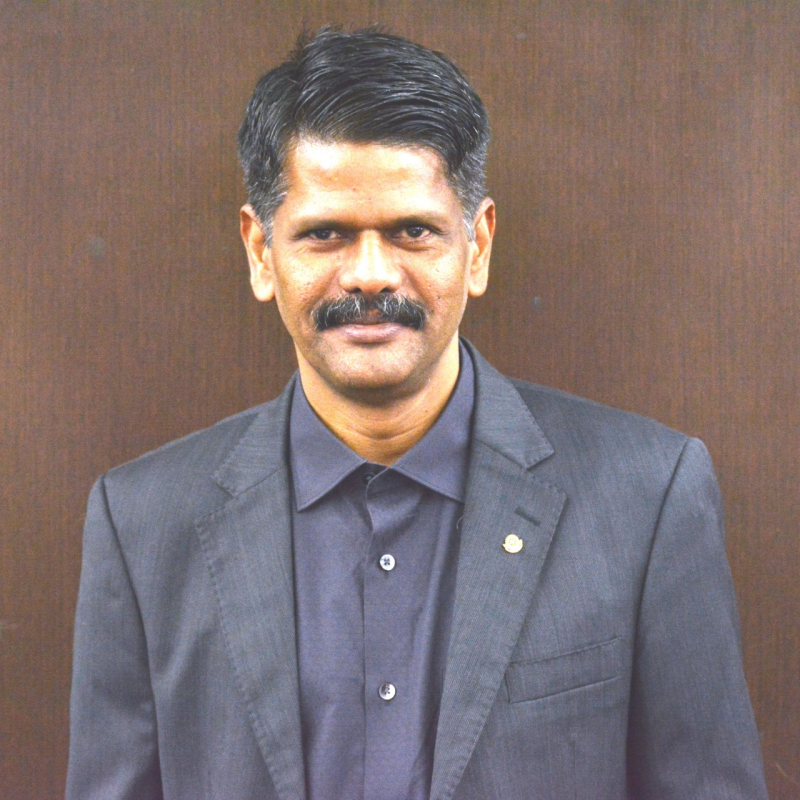
Definitions
Definitions
-Build familiarity on frequently used Lean Six Sigma terms
-Understand better how we can help you
-Know more on the various kinds of interventions and the ones that are best suited for you
A B C D E F G H I J K L M N O P Q R S T U V W X Y Z
A
Affinity Diagram
The affinity diagram is one of the Seven Management and Planning Tools. It is used to organize ideas and data within project management. The affinity diagram allows large numbers of ideas stemming from brainstorming to be sorted into groups, based on their relationships, for review and analysis.
Alpha Risk
Alpha risk is maximum amount of risk involved when making a Type I Error. The probability is always greater than zero, and is usually established at 5%. The researcher makes decisions to the greatest level of risk that is acceptable for a rejection of H0.
Alternate Hypothesis (Ha)
A statement of change or difference, the hypothesis is what you are trying to prove.
ANOVA ( Analysis of Variance)
Hypothesis test used to analyze the difference in means between two or more samples.
Assemble To Order
A manufacturing environment where the final product is assembled – generally using standard components but assembled for a specific customer configuration and usually based on the receipt of a customer order.
Assignable Cause
The name of the source of variation in a process that is not due to chance and therefore can be identified and eliminated.
Autonomation
Incorporating human intelligence into an automated process to stop the process or enable automatic corrections before the process is continued – also known as ‘Jidoka’.
Autonomous Maintenance
Self-contained and sustained cleaning, inspection and maintenance activities co-developed, maintained and performed at the machine by the operator.
B
Baseline
The current operating performance of a process; used to characterize the starting point for improvement measurements.
Black Belt
A process improvement project team leader who is trained in the principles and practices of Six Sigma methodologies and tools, and who is responsible for project execution.
C
CDOV
Concept Development; Design Product and Process; Optimization; Production and Process Verification; the disciplined process for managing design for Six Sigma projects.
Cell
An arrangement of people, machines, materials and methods with processing steps placed right next to each other in sequential order through which parts are processed in a continuous flow.
Champion
A business leader who facilitates leadership, implementation and deployment of continuous improvement initiatives and projects.
Change Over Time
The internal stopped machine time difference between the completion of a last good part from a factory order running on a machine to the first good part on the next factory order.
Charter
A written commitment by management stating the scope of authority for an improvement group. Resources, including time and money, are specifically addressed.
Common Cause
A source of process variation that is inherent to the process and is common to all data.
Confidence Interval
An interval that can be said, with X% certainty, to contain the true process mean or standard deviation. For example: “We are 95% confident that the true process mean is in the interval”; or “Approximately 95 out of a 100 CI’s will contain the population parameter”.
Control Plan
Process documentation that describes the system for controlling processes and products.
CTQ ( Critical to Quality)
A condition that must be met in order for the process or product to satisfy the most important customer requirements.
D
Defect
Non-conformance of a product with specified requirements or non-fulfillment of customer expectations.
DPMO
The number of defects per million opportunities.
Defective
Any unit with one or more defect; a defective product is unfit for its intended use.
DFSS
Application of Six Sigma and Lean tools utilized for designing new products or new processes using the CDOV roadmap (Concept, Design, Optimize, Verify); also known as Lean Design for Six Sigma(LDFSS).
DOE
A method for testing and optimizing a process. DOE uses a planned experiment to control input variables and measure their effect on output variables; it uses an experiment rather than real world data.
DMADV
DMADV stands for Define, Measure, Analyze, Design, and Verify. DMADV is a data driven quality strategy for designing products and processes, and is an integral part of a Six Sigma Quality Initiative.
DMAIC
The structured road map for breakthrough process improvement for existing products and existing processes (Define, Measure, Analyze, Improve and Control).
Design Validation
Testing to ensure that a product conforms to defined user needs and/or requirements.
Design Verification
Conformation by examination and provision of evidence that specify requirements have been met. Testing to ensure that all design outputs meet design requirements.
E
Efficiency
The ratio of earned hours to actual work; it is a percentage that compares output of production in hours to input of labor hours.
Entitlement
The optimal performance that can be achieved by a process and how the process would operate if it was centered and did not drift.
G
GEMBA
Gemba is the Japanese word for “the real place”. In business it is used to name the place of value creation. In manufacturing, for example, the factory.
Green Belt
A green belt holder is trained on the improvement methodology of Six Sigma and will lead a process improvement or quality improvement team. His/her skills are less than that of a Black Belt or Master Black Belt holder.
H
Heijunka
Refers to load leveling.
Hypothesis Testing
A way of analyzing data, particularly from designed experiments, that tries to determine if results observed are statistically significant, as opposed to being the results of random variation.
J
JIT
A production approach ensuring that both internal and external customers receive only what is needed, just when it is needed and in the exact quantities needed.
K
Kaizen Event
A concerted team initiative that requires significant pre-work and post-event activity to plan and deploy results. A Kaizen Event usually achieves breakthrough process optimization within a relatively short period of time, usually 3-5 days; also known as a Kaizen Blitz.
Kaizen Facilitator
An employee who has received basic training in how to perform pre-planning, planning, execution, and follow-up for a 3-5 day Kaizen Event.
Kanban
A communication tool (not a system) used to coordinate production and movement of parts between processes in a pull system.
KJ
Name after Jiro Kawakita, a noted Japanese anthropologist who developed the method, KJ is a technique employed to summarize and characterize data gathered during field evaluations.
L
Lean Manufacturing
Lean manufacturing basically means “doing more with less” by employing “lean thinking”. Lean manufacturing is a never ending effort to eliminate waste. Waste in this context means any activity that consumes resources without adding value in design, manufacturing, distribution, and customer service processes. A simple definition of Lean is “cycle time reduction through waste elimination”.
Line Balancing
A process in which work elements are evenly distributed within a value stream to meet Takt time.
M
Master Black Belt
The highest level of technical and organizational proficiency. A Master Black Belt holder provides training for and assists Black Belts.
Mistake Proofing
The design of a process to ensure that mistakes (errors) are at best impossible to make and are at least easily detected and corrected – also known as Error Proofing and Poka-Yoke.
N
Normal Distribution
A continuous, symmetrical, bell-shaped frequency distribution for variable data. Data distribution is symmetrical around the mean and there is an equal chance of a data point being above or below the mean. A normal distribution can be described completely by knowing the mean and standard deviation.
Null Hypothesis(H0)
A statement of no change or difference. This statement is assumed true until sufficient evidence is presented to reject it; “if p is low, H0 must go”. The null hypothesis is what you are trying to disprove.(Visited 110 time, 1 visit today)
O
O.E.E
O.E.E. stands for ‘Overall Equipment Effectiveness’. It is a shop floor tool to measure how well manufacturing equipment is running when compared to theoretical goals. The O.E.E. is obtained by three ratios: 1. the availability ratio 2. the quality ratio, 3. the performance ratio.
One Piece Flow
In its purest form, it’s a continuous flow where items are processed and moved directly to the next process; one piece at a time.
P
P-Value
The P-Value is the probability that your data could occur by random chance if the null hypothesis is true. P-value is precisely the largest significance level at which a null hypothesis cannot be rejected.
Pareto Principle
A principle developed by an Italian economist that states that the vast majority of the end results are determined by a small percentage of the group; also known as the “80/20 rule”.
PDCA
Plan, Do, Check, Act.
This is method or sequence of actions used to identify and plan important accomplishments and changes that are desirable; also known as the Deming Wheel or Shewhart Cycle.
Poka-Yoke
Refers to mistake-proofing.
POU ( Point of Use)
A Lean technique used to ensure that the correct part or tooling is at the right place and at the right time.
Process Capability
The measure of the ability of a process to produce products that fall within specification limits or within agreed upon customer requirements.
Product Segmentation
Grouping of parts based on similar characteristics or manufacturing process steps; facilitates flow.
Production Instruction Kanban
A production instruction kanban authorizes parts to be made; it operates between supermarket and upstream processes.
Pull System
A pull system produces parts only in response to actual customer demand. In a pull system, parts are produced only in the amount that has been consumed by the downstream process.
Push System
A system that produces parts according to a forecast of customer demand. The forecasted demand is usually either greater than or lesser than actual demand. In the push system, each process in the value stream operates as an “isolated island”, producing parts according to a forecast-based schedule received from production control without regard to the actual demand of downstream processes.
R
Repeatability and Reproducibility
Repeatability: The variation between successive measurements of the same part and same characteristic by the same person using the same instrument.
Reproducibility: The difference in the average of measurements made by different persons using the same or different instrument when measuring identical characteristics.
S
Six Sigma
It is a philosophy for managing process improvements. It’s also a methodology of structured problem solving, applying associated toolsets to reduce process variations and thereby eliminating defects. As a standard metric, Six Sigma quality is 3.4 defects per million opportunities.
Special Causes Variation
Variation that is due to an identifiable, out-of-the-ordinary event; it is not a usual part of the process.
Statistical Process Control (SPC)
Statistical Process Control is a system that utilizes control charts to keep a process operating within its appropriate variation limits. SPC was created by Walter Shewhart of Bell Labs in the early 1920s.
T
Takt Time
Takt time is the rate at which the customer buys a product or the rate at which you need to produce a part based on your customer’s order rate for a given period of time.
Total Productive Maintenance (TPM)
TPM is productive maintenance with the involvement of all employees. The Goal of TPM is to restore equipment so that it is in a like-new condition and to keep it in a like-new condition to ensure maximum machine availability.
Type I Error
The error in rejecting H0 when it is in fact true, or in saying there is a difference when in fact, there is no difference.
Type II Error
The error in failing to reject H0 when it is in fact false or in saying there is no difference when there really is a difference.
V
Value Stream Mapping (VSM)
A “one page picture” of all the processes that occur from the time a customer places an order for a product until the customer has received that product. A value stream map shows all activities; value added and non-value added by the current state of processes executed to meet customer demands.
Voice Of The Business (VOB)
Business requirements or targets that must be considered during the design phase or during improvement activity.
Voice Of The Customer (VOC)
Data collected from the customer that tells you what the customer wants; a customer input technique to capture qualitative evaluations of performance.
W
Waste
Anything within a value stream that adds cost or time without adding value.
Waste Walk
A technique involving walking through a process area to observe and record examples of each of the 8 wastes.
Work in Process ( WIP )
Items – material or information – between machines, processes or activities waiting to be processed.
Z
Zero Defects
A philosophy based on the idea that process improvements should target the elimination of waste and achievement of perfect quality.







